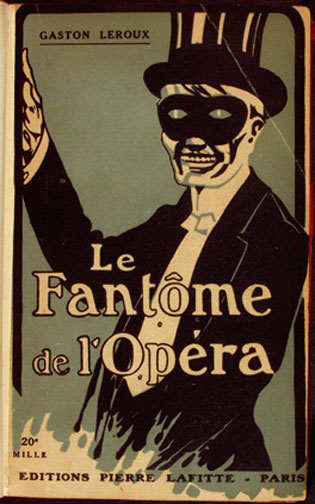The Phantom of the Opera by Gaston Leroux (1910) was an interesting experience. Having seen Weber’s show on Broadway and the 2004 film I had a loose idea of what I was getting into, but my wife warned me that the book would be very different. It was an interesting read, even if it hasn’t become one of my favorite books. I found the characterizations and some of Leroux’s storytelling techniques interesting.
Spoilers ahead…
I found the most dramatic differences between the book and Weber’s show to rest in the character of Erik, the phantom. Weber depicts a lonely, tortured, tragically romantic artist that looks like an opera singer in his prime, only with a severe burn. Leroux’s Erik, however, is an ancient decrepit thing, half-mad, more like Tolkien’s Gollum/Smeagol than anything. He’s still a genius, not only as a composer but as an architect and any number of other exotic and frightening skills learned in India and elsewhere. He’s not driven to expose his genius to the world, though. It serves him alone, and he has long retired from public life, preferring the isolation in which he practices his mad arts.
His insanity plays a much more significant role in his character. His grasp on right and wrong, truth and falsehood, is tenuous and seems to come and go at his whim. Not always in a malicious sense, mind you – he’s simply disconnected from the idea of personal responsibility. His instability impacts the plot, too; Erik will switch obsessions on a moment’s notice, and design puzzles with no internal logic, no way to deduce the answer. It makes him that much more dangerous, but probably less relatable.
Leroux is switching writing styles throughout the book. He writes as a historian, incorporating personal accounts, anecdotes, news clippings, quotes from other historians and any number of other excuses to change the author’s voice mid-story to serve his purposes. The effect is fantastic and immersive, and really helps to build the world of the opera house. It’s a technique I noted in Rowling’s work last time I read Half-Blood Prince and Deathly Hallows, and one that I really admire. I suspect (though I haven’t read it) that the same technique has contributed to the popularity of World War Z.
